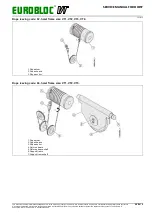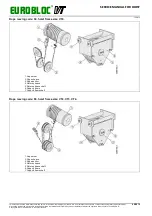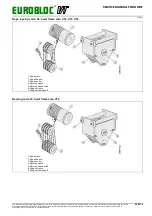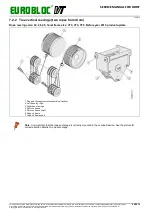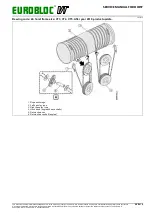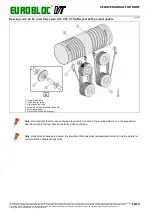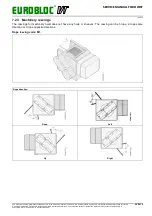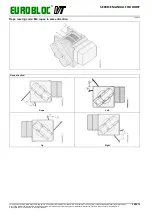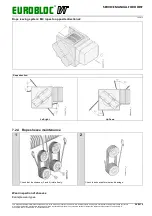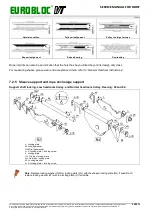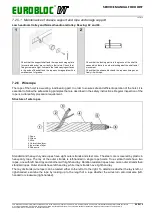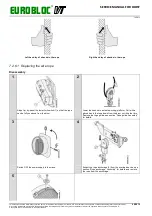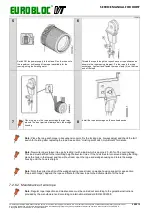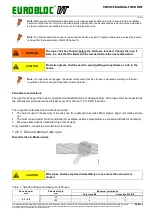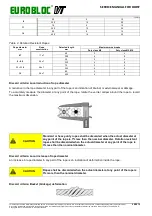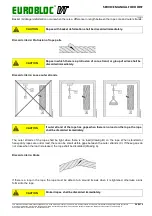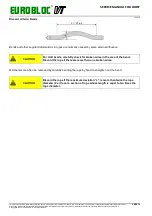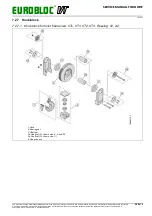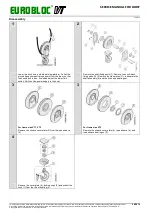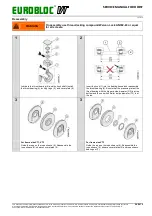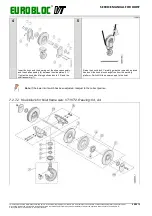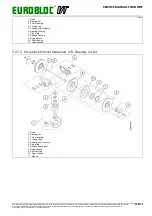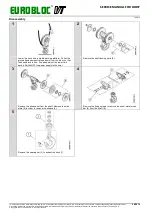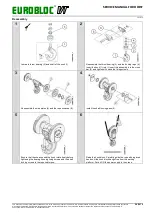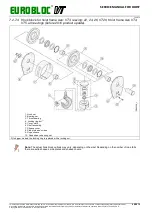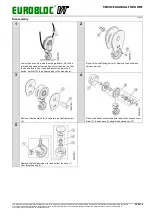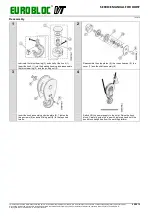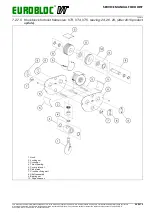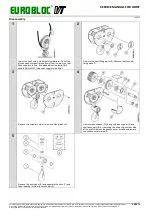
EUROBLOC
SERVICE MANUAL FOR HOIST
151/212
This document and the information contained herein, is the exclusive property of Verlinde S.A.S. and represents a non-public, confidential and proprietary trade secret that
may not be reproduced, disclosed to third parties, altered or otherwise employed in any manner whatsoever without the express written consent of Verlinde S.A.S.
Copyright © (2013) Verlinde S.A.S. All rights reserved.
06/2015
Note: Mechanical and electrical maintenance work requires special skills and tools to ensure safe and reliable
operation of the product. Only the authorized service personnel or an experienced service technician authorized
by the manufacturer are entitled to carry out the maintenance work.
Note: The internal examination of wire rope shall not be done as part of regular maintenance, unless the person
is trained for that examination (ISO4309 Annex D).
WARNING
The rope shall be changed before the limits are reached. Change the rope if
there is a risk that the limits will be reached before the next examination.
CAUTION
Protective gloves shall be used to avoid getting wire splinters or cuts to the
hands.
Note: If a rope must be changed, the owner must ensure that the old rope is disposed according to the local
regulations. Refer to chapter “Disposal of waste material”.
Periodical examinations
The user must inspect the rope for possible visual deformations or damages daily. Wire ropes shall be inspected by
the authorized service personnel at least every 12 months or 10 % SWP reduction.
The inspection intervals must be shortened when:
The hoist is used in heavy duty or process use (for example, duty class M6 or higher, paper mill cranes and so
on)
The hoist is used under harsh conditions (for example, extreme temperatures, excessive dirt/dust or outdoors)
Previous examinations indicated a high rate of wear.
If any hesitation, contact the manufacturer for advice.
7.2.6.3 Discard criteria of wire rope
Discard criteria: Broken wires
CAUTION
Wire ropes shall be replaced immediately in case more than one wire is
broken.
Table 1. Standard Ropes and Heavy-Duty Ropes.
Rope diameter
mm
Detected length
mm
Maximum wire breaks
Duty class M4
Duty class M5, M6
6.2 – 6.5
40
3
6
200
6
12

